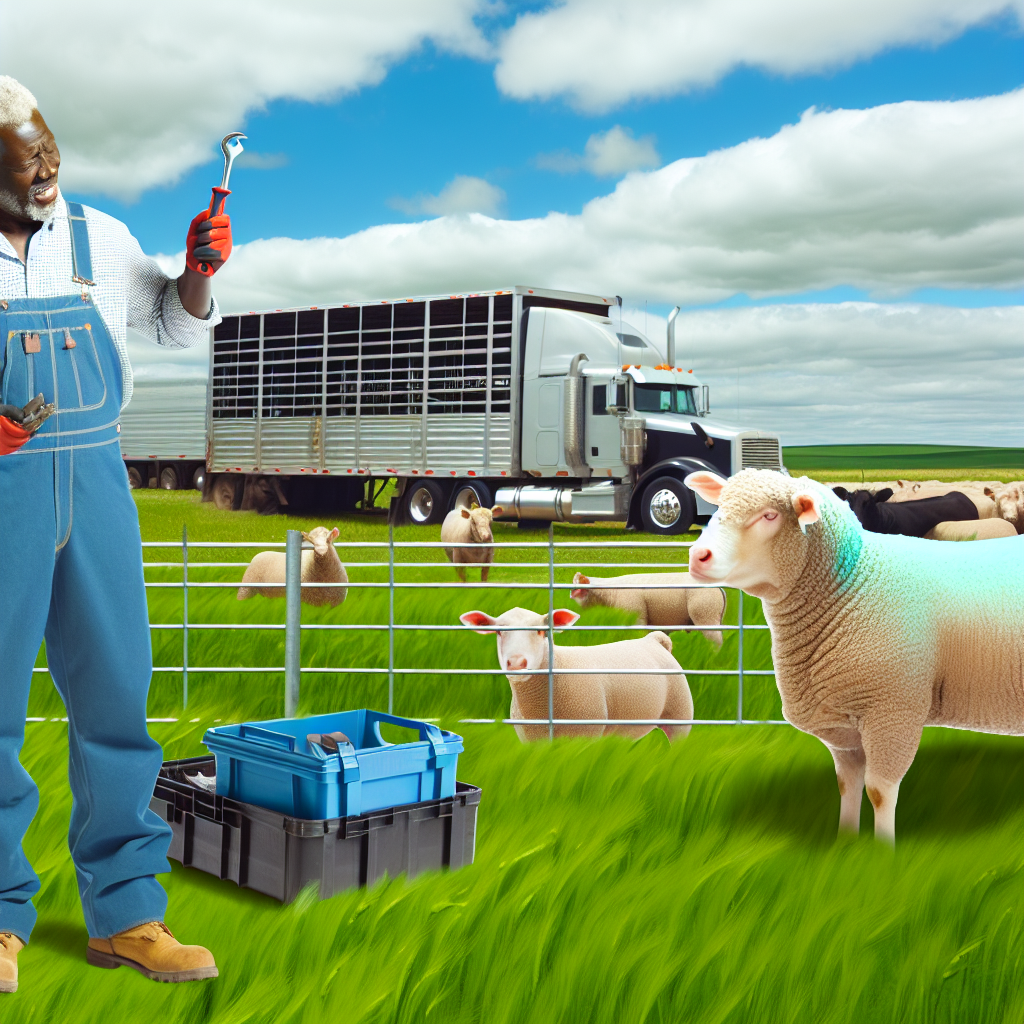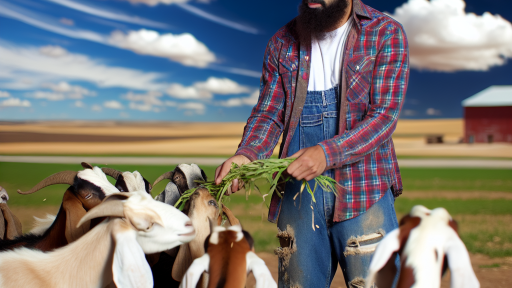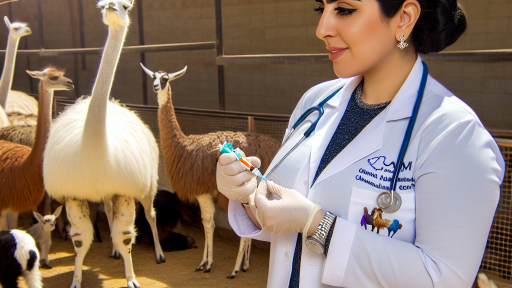Understanding the Importance of Vehicle Maintenance for Livestock Transport
Ensuring Animal Safety
Proper vehicle maintenance significantly increases livestock safety during transport.
Ill-maintained vehicles can cause accidents, leading to injury or death for the animals.
Regular inspections and repairs help prevent breakdowns that put livestock at risk.
Additionally, ensuring climate control within the vehicle can minimize stress on the animals.
Legal Compliance and Regulations
Transportation of livestock is subject to strict regulations.
Maintaining vehicles according to these regulations ensures compliance with animal welfare laws.
Failure to comply can result in hefty fines and legal repercussions for transporters.
Furthermore, being compliant enhances a company’s reputation in the agricultural community.
Improving Efficiency and Cost-effectiveness
Well-maintained vehicles improve fuel efficiency, reducing overall operational costs.
Regular maintenance helps avoid costly repairs that arise from neglect.
This ultimately leads to more reliable transportation for livestock, which is crucial for businesses.
Moreover, efficient operations contribute to timely deliveries, helping businesses remain competitive.
Boosting Driver Confidence and Comfort
Drivers feel more confident operating well-maintained vehicles.
This confidence translates into better driving performance during livestock transport.
Comfortable and safe vehicles support driver concentration and reduce fatigue.
Transform Your Agribusiness
Unlock your farm's potential with expert advice tailored to your needs. Get actionable steps that drive real results.
Get StartedThus, satisfied drivers are more likely to prioritize animal welfare during transit.
Key Components of Transport Vehicles: A Focus on Safety Features
Importance of Safety in Transporting Livestock
Safety is paramount when transporting livestock.
Proper transport minimizes stress on animals.
It also reduces the risk of injury during transit.
Transport vehicles must meet specific safety standards.
Regular maintenance ensures vehicles operate efficiently.
Structural Integrity
The structural integrity of transport vehicles is crucial.
Sturdy frames ensure animals are protected from external elements.
Inspect frames regularly for signs of damage.
Utilize high-quality materials to enhance durability.
Reinforce critical areas to prevent structural failure.
Loading and Unloading Mechanisms
Effective loading and unloading mechanisms are essential.
They help avoid injuries during transport operations.
Use ramps and gates that provide safe access.
Ensure mechanisms operate smoothly and reliably.
Regular checks prevent operation failures during critical times.
Ventilation and Temperature Control
Proper ventilation is critical in transport vehicles.
Good air circulation keeps livestock comfortable.
Temperature control prevents heat stress during warm months.
Invest in systems that monitor environmental conditions.
Regularly clean and maintain ventilation systems for effectiveness.
Safety Restraints
Implement safety restraints to secure animals during transit.
Use non-restrictive restraints that allow movement.
Ensure restraints are easily operable for emergencies.
Showcase Your Farming Business
Publish your professional farming services profile on our blog for a one-time fee of $200 and reach a dedicated audience of farmers and agribusiness owners.
Publish Your ProfileInspect restraints regularly for wear and tear.
Consider harness types that comply with safety standards.
Lighting and Visibility
Good lighting improves safety conditions inside the vehicle.
Ensure all areas are well-lit for visibility during loading.
Install reflective materials to enhance visibility on the road.
Make sure headlights and interior lights are functioning well.
Regular Maintenance Practices
Implement a regular maintenance schedule for transport vehicles.
Regular checks increase the longevity of the vehicle.
Maintain a checklist for all safety features and systems.
Proper documentation of maintenance helps with compliance.
Encourage drivers to report any issues immediately.
Regular Inspection Protocols
Importance of Inspections
Regular inspections ensure the safety of transport vehicles for livestock.
They help identify potential issues before they escalate.
Frequent checks also enhance the reliability of transportation.
Common Vehicle Issues
Several common issues can affect transport vehicles.
For example, tire wear and tear can lead to accidents.
Brake malfunctions may compromise vehicle control.
Additionally, faulty ventilation systems can harm livestock comfort.
Inspection Checklist
Implement a comprehensive inspection checklist.
- Start with checking tire pressure and tread depth.
- Inspect brake fluid levels and functionality.
- Examine the vehicle’s body for structural damage.
- Verify the proper functioning of all lights and signals.
- Evaluate ventilation systems for adequate airflow.
Frequency of Inspections
Ideally, conduct inspections before every transport occasion.
However, regular weekly or monthly checks are beneficial as well.
Change the frequency based on vehicle usage.
Documentation of Inspections
Keep detailed records of every inspection performed.
This practice helps in tracking recurring issues.
Documentation may also prove crucial for liability matters.
See Related Content: Building Secure Facilities for Exotic Animals
Cleaning and Sanitation: Best Practices to Ensure Livestock Health
Importance of Regular Cleaning
Regular cleaning of transport vehicles is essential for livestock health.
It prevents the spread of diseases among animals during transport.
Clean vehicles also reduce stress levels in livestock.
To maintain safety, always prioritize hygiene protocols.
Best Cleaning Techniques
Use high-pressure water systems to clean the interiors effectively.
Thoroughly scrub all surfaces to remove dirt and manure.
Don’t forget to clean any nooks and crannies where bacteria can thrive.
Moreover, use disinfectants approved for veterinary use.
Choosing the Right Disinfectants
Select disinfectants that are effective against a broad spectrum of pathogens.
Check if the disinfectant is safe for use around livestock.
Furthermore, follow the manufacturer’s instructions for proper usage.
Leave the disinfectant on surfaces for the recommended contact time.
Sanitation Steps Before and After Transport
Implement a routine that includes sanitation before and after each transport.
Firstly, remove all organic matter from the vehicle.
Showcase Your Farming Business
Publish your professional farming services profile on our blog for a one-time fee of $200 and reach a dedicated audience of farmers and agribusiness owners.
Publish Your ProfileNext, wash the vehicle with detergent and water.
Subsequently, apply the disinfectant and allow it to dry completely.
Finally, inspect the vehicle to ensure all areas are thoroughly cleaned.
Use of Protective Equipment
Always wear protective gear while cleaning transport vehicles.
Gloves and masks protect you from harmful substances and pathogens.
Additionally, consider using protective eyewear to shield your eyes.
Ensure that all staff members are trained in proper sanitation procedures.
Monitoring and Record-Keeping
Maintain records of cleaning and sanitation activities for accountability.
Note the date, time, and personnel involved in each cleaning session.
Regularly review these records to ensure compliance with sanitation standards.
Moreover, use this information to improve cleaning schedules when necessary.
Uncover the Details: Waste Management In Livestock Facilities
Tire Maintenance and Load Management for Safe Transport
Importance of Tire Maintenance
Tire maintenance is crucial for vehicle safety.
Properly maintained tires enhance traction and control.
They also improve fuel efficiency during transport.
Regular inspections prevent unexpected tire failures.
Routine Tire Inspections
Perform tire inspections at least once a month.
Look for signs of wear such as cracks or bulges.
Check tire pressure regularly to ensure optimal performance.
Uneven wear indicates alignment issues that need correction.
Correct Tire Inflation
Proper tire inflation is vital for safe transport.
Under-inflated tires can lead to blowouts and accidents.
Over-inflated tires reduce grip and increase wear.
Consult the vehicle manual for recommended tire pressure.
Load Management for Vehicles
Effective load management enhances vehicle stability.
Always adhere to the vehicle’s load capacity limits.
Distribute the weight evenly across the vehicle.
An unbalanced load can cause steering difficulties.
Securing the Load
Securely fastening loads prevents shifting during transport.
Use appropriate tie-downs and straps to ensure safety.
Check load security before starting the journey.
Regularly inspect straps for wear and tear.
Legal Requirements and Guidelines
Familiarize yourself with local transport regulations.
Adhere to weight limits as per government guidelines.
Regularly update yourself on any changes in regulations.
Non-compliance can lead to fines and safety hazards.
Learn More: Sustainable Sheep Grazing Practices

Choosing the Right Vehicle for Different Types of Livestock
Understanding Livestock Transport Requirements
Transporting livestock requires specific vehicle considerations.
Each type of livestock has unique needs during transport.
Understanding these needs ensures safety and comfort for the animals.
Showcase Your Farming Business
Publish your professional farming services profile on our blog for a one-time fee of $200 and reach a dedicated audience of farmers and agribusiness owners.
Publish Your ProfileTypes of Livestock and Their Requirements
Cattle require spacious and well-ventilated vehicles.
Ensure the trailer has adequate height for larger breeds.
Pigs need temperature-controlled environments to prevent stress.
Choosing a vehicle with solid flooring ensures their safety.
Sheep are typically transported in smaller, partitioned trailers.
Such trailers should allow for adequate air circulation.
Poultry requires enclosed spaces to minimize stress and injury.
A well-ventilated and dark environment calms them during transport.
Selecting the Appropriate Vehicle Type
Different livestock need various vehicle types for safety.
Consider whether a truck or trailer best suits your needs.
Gooseneck trailers offer stability for larger loads.
Livestock semis can handle bulk transport efficiently.
Horse trailers provide ample space for equine transport.
Evaluating Vehicle Features
Ensure vehicles have proper ramps for easy loading and unloading.
Non-slip flooring significantly enhances animal safety.
Features like ventilation systems are crucial for livestock comfort.
Additionally, check for secure tie-downs and partitions.
Regulations and Compliance
Always adhere to local regulations regarding livestock transport.
Compliance ensures the well-being of the animals during transit.
Research animal welfare standards to maintain best practices.
Find Out More: Preparing Your Farm for Livestock Transportation
Emergency Preparedness: What to Carry in Transport Vehicles for Livestock
Essential Equipment
Always ensure you have essential equipment in your transport vehicle.
For unexpected situations, carry basic first aid supplies.
This kit should include bandages, antiseptics, and gauze.
Consider adding pain relief medications for livestock.
Also, pack tools for minor repairs and adjustments.
Having duct tape, wrenches, and screwdrivers is advisable.
Food and Water Supplies
Maintain adequate food and water supplies for your animals.
Transport suitable feed for the specific livestock you carry.
Consider carrying supplemental minerals and vitamins as well.
Always have clean, fresh water sources available during trips.
This preparation helps keep your livestock hydrated and healthy.
Comfort Items
Prioritize the comfort of your animals during transport.
Use comfortable bedding or mats inside the vehicle.
These items can help reduce stress during long journeys.
Additionally, consider adding portable fans for ventilation.
Maintaining a cool environment can alleviate heat stress.
Emergency Contact Information
Compile a list of emergency contact numbers.
This list should include veterinarians and local authorities.
Keep this information easily accessible for quick reference.
Showcase Your Farming Business
Publish your professional farming services profile on our blog for a one-time fee of $200 and reach a dedicated audience of farmers and agribusiness owners.
Publish Your ProfileHaving these contacts helps ensure assistance is nearby.
Documentation
Carry important documentation regarding your livestock.
This includes health records and ownership papers.
Your paperwork should be organized and easily accessible.
Documentation can prove vital during emergencies or inspections.
Training and Preparedness
Train yourself and your team on emergency procedures.
Run drills to practice responding to livestock emergencies.
Understanding evacuation protocols can save lives.
Furthermore, stay informed about local ordinances and regulations.
Being knowledgeable helps ensure compliance during transport.
Regulatory Compliance
Understanding Transport Regulations
Transport regulations ensure the safety of livestock during transit.
These guidelines vary by region and species.
It’s vital to familiarize yourself with local operational standards.
Organizations like the USDA and FAO provide essential resources.
Consult these bodies to stay updated on your regulatory requirements.
Key Guidelines to Follow
Following specific guidelines aids in regulatory compliance.
First, ensure proper ventilation within the transport vehicle.
Next, provide adequate space for each livestock animal.
Maintaining appropriate temperature controls is crucial.
Regularly inspect vehicles for safety and health standards.
Documenting Compliance Efforts
Documentation serves as proof of compliance during inspections.
Maintain logs of vehicle maintenance and inspections.
Record any incidents or irregularities during transport.
This information helps identify and rectify recurring issues.
Moreover, ensure that all personnel are trained and knowledgeable.
Failing to Comply: Consequences
Non-compliance can lead to severe penalties.
License suspension or revocation is a possible consequence.
Additionally, organizations might face fines and legal actions.
These outcomes can severely impact business operations.
Ultimately, prioritizing compliance guarantees the safety of livestock.
Additional Resources
Ante-Mortem Livestock Inspection – Revision 3 | Food Safety and …




